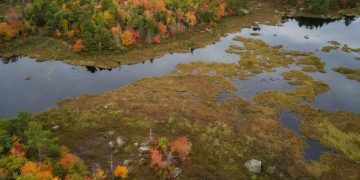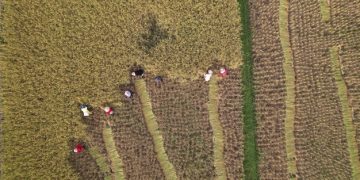Invasive Species Control: A Comparison of Effective Methods
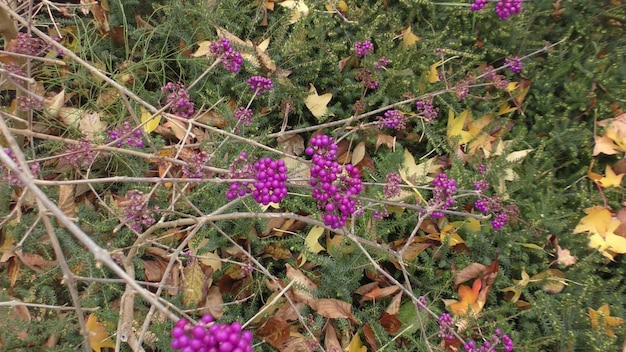
Comparison Analysis: Evaluating the Effectiveness of Different Methods for Controlling Invasive Plant Species examines various strategies, from chemical to biological controls, assessing their impact on ecosystems and long-term sustainability in the US.
The spread of invasive plant species poses a significant threat to biodiversity, ecosystem health, and economic stability in the US. Understanding the effectiveness of different control methods is crucial for developing sustainable management strategies. This article provides a comparison analysis: evaluating the effectiveness of different methods for controlling invasive plant species.
Understanding the Invasive Plant Problem in the US
Invasive plant species are non-native plants that establish and spread aggressively, outcompeting native vegetation and disrupting ecological processes across the US. Their introduction and proliferation lead to habitat degradation, reduced biodiversity, and significant economic losses.
The Impact of Invasive Plants on Ecosystems
Invasive plants alter ecosystem structure and function by changing nutrient cycles, water availability, and fire regimes. This can detrimentally affect native plant and animal communities, leading to declines in populations and habitat loss. Understanding these effects allows for more targeted interventions.
Economic Costs of Invasive Plant Management
Managing invasive plants requires substantial financial resources for prevention, early detection, and control efforts. These costs include labor, equipment, herbicides, and restoration activities. Quantifying these expenses emphasizes the need for cost-effective and sustainable management approaches.
- Reduced crop yields and increased agricultural expenses.
- Decreased property values and recreational opportunities.
- Increased costs for infrastructure maintenance due to plant encroachment.
Effective strategies necessitate a thorough understanding of the issues that arise when invasive species spread in ecosystems within the US. Developing this understanding is crucial to maintaining the natural ecosystems of the United States.
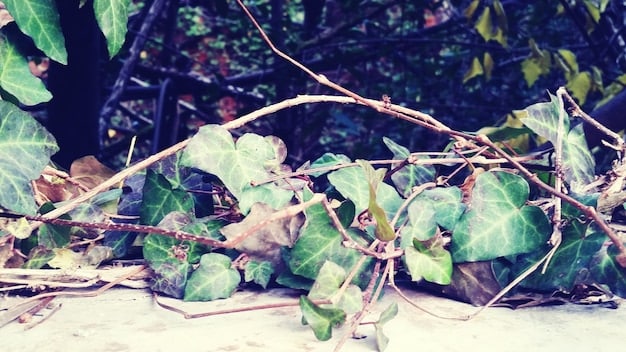
Mechanical Control Methods: Advantages and Disadvantages
Mechanical control methods involve physically removing or damaging invasive plants to limit their spread and impact. These techniques include hand-pulling, cutting, mowing, and tilling. While they can be effective, they also have limitations.
Hand-Pulling and Digging
Hand-pulling and digging are suitable for small infestations of invasive plants, particularly in sensitive areas where herbicides are not desired. These methods are labor-intensive but can effectively remove the entire plant, including the roots, preventing regrowth. This approach is more environmental friendly.
Cutting and Mowing
Cutting and mowing can suppress the growth of invasive plants by reducing their ability to photosynthesize and reproduce. Repeated treatments are often necessary, and timing is crucial to prevent seed production. These methods are most effective for herbaceous plants and grasses.
- Reduced reliance on chemical controls.
- Lower potential for non-target impacts.
- Can be used in environmentally sensitive areas.
The benefits include a reduced reliance on chemical controls, a lower potential for non-target impacts, and the ability to use the method in environmentally sensitive locations. The downsides are the labor costs and the length of time the treatment can take to become effective.
Chemical Control Methods: Efficacy and Environmental Concerns
Chemical control methods involve the use of herbicides to kill or inhibit the growth of invasive plants. Herbicides can be applied directly to foliage, stems, or soil, and their effectiveness depends on the plant species, application timing, and environmental conditions.
Types of Herbicides and Their Application
Different types of herbicides are available, including systemic herbicides that are absorbed and translocated throughout the plant, and contact herbicides that only affect the parts of the plant they directly contact. Proper selection and application are essential to maximize efficacy and minimize off-target impacts.
Environmental Impacts of Herbicide Use
Herbicide use can have unintended consequences for non-target plants, soil organisms, and water quality. Careful consideration of environmental risks and adherence to best management practices are necessary to minimize these impacts. Mitigation measures, such as using selective herbicides and implementing buffer zones, can reduce risks.
- Potential for herbicide drift and off-target damage.
- Development of herbicide-resistant plant populations.
- Concerns about human and wildlife exposure.
Chemicals can offer relatively quick control, but care must be taken to minimize harm to other plants and species. Overall costs can be driven up greatly depending on environmental control measures.
Biological Control Methods: Harnessing Natural Enemies
Biological control methods involve the use of natural enemies, such as insects, pathogens, and grazing animals, to control invasive plant populations. This approach aims to establish self-sustaining control agents that selectively target the invasive plant without harming native species.
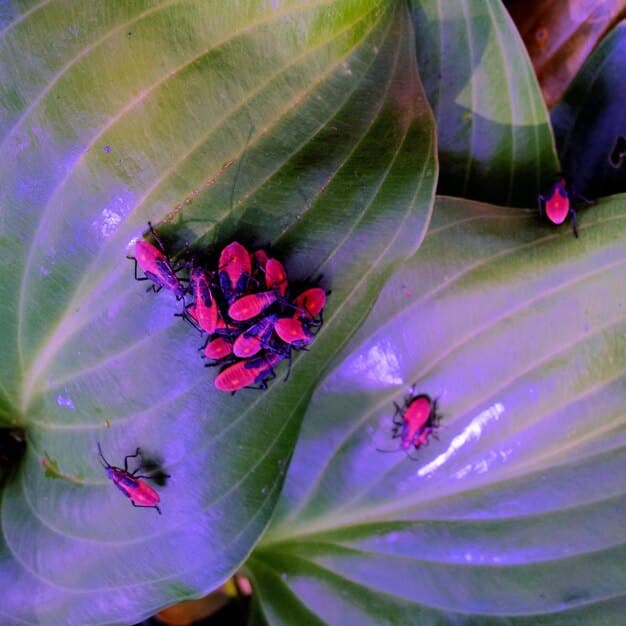
Introduction and Evaluation of Biocontrol Agents
The introduction of biocontrol agents requires rigorous testing to ensure they are host-specific and will not attack non-target plants. Pre-release evaluations include host-range testing, impact assessments, and risk analyses. Post-release monitoring is essential to assess the agent’s effectiveness and potential non-target effects.
Success Stories and Challenges of Biocontrol
Several biocontrol programs have successfully reduced the abundance and impact of invasive plants, such as the use of Galerucella beetles to control purple loosestrife. However, challenges remain, including the potential for non-target effects, the time required for establishment, and the need for integrated management approaches.
Biocontrol has been proven to be increasingly effective with invasive species in the United States. It is important to properly control their introduction into the environment. This includes a process of careful assessment and evaluation.
Integrated Pest Management: Combining Multiple Strategies
Integrated Pest Management (IPM) is a comprehensive approach that combines multiple control methods to achieve long-term suppression of invasive plants while minimizing environmental impacts. IPM strategies consider the biology of the target plant, the ecological context, and the socio-economic factors involved.
Developing an IPM Plan
An IPM plan typically includes: defining management objectives, monitoring invasive plant populations, setting action thresholds, selecting appropriate control methods, implementing control measures, and evaluating their effectiveness. Adaptive management is essential to adjust strategies based on monitoring data and changing conditions.
Case Studies of Successful IPM Implementation
Several successful IPM programs have demonstrated the benefits of combining mechanical, chemical, and biological control methods. These case studies highlight the importance of a holistic and adaptive approach to invasive plant management. An example is using herbicides in tandem with mechanical removal.
- Long-term sustainability and reduced reliance on single control methods.
- Enhanced ecosystem resilience and biodiversity conservation.
- Cost-effectiveness through targeted and adaptive management.
Using an IPM strategy often leads to more sustainable and cost effective results in the long run. However, the method is also more complex and requires in depth evaluation.
Restoration and Prevention: Long-Term Strategies
Restoration and prevention are critical components of long-term invasive plant management strategies. Restoration involves restoring native plant communities and ecosystem functions in areas affected by invasive plants. Prevention focuses on preventing the introduction and spread of new invasive species.
Restoring Native Plant Communities
Restoration activities include removing invasive plants, preparing the soil, planting native species, and providing ongoing maintenance. Careful selection of native plants that are well-adapted to the site conditions is essential for successful restoration. Ecosystem-based adaptation is also important.
Preventing the Introduction and Spread of Invasive Plants
Preventive measures include inspecting and cleaning equipment, using certified weed-free seeds and plants, educating the public about invasive plants, and implementing early detection and rapid response programs. Collaboration and coordination among stakeholders are essential for effective prevention.
- Developing and enforcing regulations to prevent the introduction of new invasive species.
- Promoting responsible landscaping practices and discouraging the use of invasive plants in gardens.
- Supporting research on the ecology and management of invasive plants.
Long term ecosystem and habitat health relies on the constant monitoring and assessment of invasive species and their presence within an ecosystem. Collaboration from different stakeholders can have a positive effect.
| Key Aspect | Brief Description |
|---|---|
| 🌱 Mechanical Control | Physical removal like hand-pulling or mowing. Good for small areas, but labor-intensive. |
| 🧪 Chemical Control | Use of herbicides to kill invasive plants. Effective but raises environmental concerns. |
| 🐛 Biological Control | Introducing natural enemies to control invasive plants. Sustainable but requires careful evaluation. |
| 🤝 IPM Strategies | Integrated Pest Management combines methods for long-term control with minimal impact. |
Frequently Asked Questions
▼
Invasive plant species are non-native plants that spread aggressively and outcompete native vegetation, disrupting ecosystems. They can cause significant environmental and economic damage in the US.
▼
The main mechanical control methods include hand-pulling, digging, cutting, and mowing. These methods involve physically removing or damaging the invasive plants to prevent their spread.
▼
Chemical control methods use herbicides to kill or inhibit the growth of invasive plants. Herbicides can be applied to the foliage, stems, or soil, depending on the plant species and the herbicide type.
▼
Biological control involves using natural enemies, such as insects or pathogens, to control invasive plant populations. This approach aims to establish self-sustaining control agents that selectively target the invasive plant.
▼
An IPM plan includes defining management objectives, monitoring plant populations, setting action thresholds, selecting appropriate control methods, implementing control measures, and evaluating their effectiveness.
Conclusion
Effective management of invasive species in the United States requires a multifaceted approach, incorporating thorough evaluation, careful planning, and adaptive strategies. By integrating various control methods and prioritizing prevention and restoration, we can protect biodiversity and ecosystem health.



